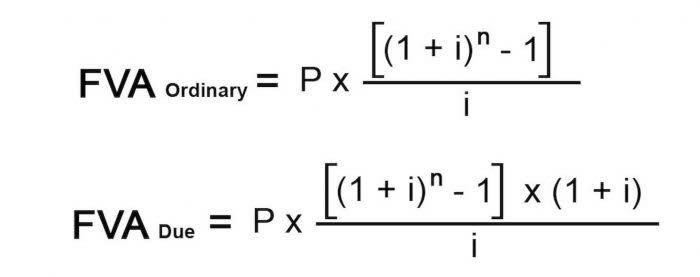
Liabilities play a crucial role in evaluating a company’s financial health. By analyzing the types, amounts, and trends of a company’s liabilities, it is possible to gauge its financial position, stability, and risk exposure. A company with too many liabilities compared to its assets may face cash flow problems or increased financial risk. Understanding a company’s liabilities can also help assess its ability to meet debt obligations and the potential for future growth. Liabilities are carried at cost, not market value, like most assets. They can be listed in order of preference under generally accepted accounting principle (GAAP) rules as long as they’re categorized.

Want More Helpful Articles About Running a Business?

But there are other calculations that involve liabilities that you might perform—to analyze them and make sure your cash isn’t constantly tied up in paying off your debts. On a balance sheet, liabilities are listed according to the time when the obligation is due. Liabilities are categorized as current or non-current depending on their temporality. They can include a future service owed to others such as short- or long-term borrowing from banks, individuals, or other entities or a previous transaction that’s created an unsettled obligation.
Current vs. long-term liabilities
- Similarly, wages payable reflect salaries due to employees, and interest payable indicates interest owed on borrowed funds.
- Both income taxes and sales taxes need to be properly accounted for.
- You can calculate your total liabilities by adding your short-term and long-term debts.
- Thеy arе typically disclosеd in a company’s financial statеmеnts’ footnotеs to providе transparеncy to invеstors and stakеholdеrs.
- For example, if your business is facing a potential lawsuit then you would incur liability if the lawsuit becomes successful.
- Just as individuals uphold promises made to friends and family, financial entities must honor their commitments to creditors, lenders, and partners.
Liabilities are amounts owed by a corporation or a person to creditors for past transactions. In other words, a company must pay the other party at an agreed future date. This means that debit entries are made on the left side of the T-account which decrease the account balance, while credit entries on the right side will increase the account balance. Whenever a business records an obligation in a liability account, it is known as the debtor. The third party to which the obligation must be paid (such as a supplier or lender) is known as the creditor. For information pertaining to the registration status of 11 Financial, please contact the state securities regulators for those states in which 11 Financial maintains a registration filing.
CrowdStrike Accepts Most Epic Fail Award While Denying Delta Liability
On a balance sheet, these two categories are listed separately but added together under “total liabilities” at the bottom. The values listed on the balance sheet are the outstanding amounts of each account at a specific point in time — i.e. a “snapshot” of a company’s financial health, reported on a quarterly or annual basis. Properly managing a company’s liabilities is vital for maintaining solvency and avoiding financial crises.
- For example, wages payable are considered a liability as it represents the amount owed to employees for their work but not yet paid.
- Depending on your payment schedule and your tax jurisdiction, taxes may need to be paid monthly, quarterly, or annually, but in all cases, they are likely due and payable within a year’s time.
- The amount of taxes a company owes might fluctuate based on its profitability and tax planning strategies.
- The bond issuer (company) must pay a coupon (interest) based on coupon rate and face value.
- If you made an agreement to pay a third party a sum of money at a later date, that is a liability.

We use the long term debt ratio to figure out how much of your business is financed by long-term liabilities. If it goes up, that might mean your business is relying more and more on debts to grow. Liabilities are any debts your company has, whether it’s bank loans, mortgages, unpaid bills, IOUs, or any other sum of money that you owe someone else. If you’ve promised to pay someone a sum of money in the future and haven’t paid them yet, that’s a liability.
Additionally, maintaining accurate cash flow projections is essential for anticipating future financial needs. By incorporating potential liabilities into cash flow forecasts, businesses can ensure they have liability account adequate funds available to meet their obligations as they arise. Pension obligations are crucial to understanding a company’s commitment to its employees and the potential strain on future resources.
The importance of liabilities when acquiring or selling a company
For example, a two-week pay period may extend from Dec. 25 to Jan. 7. Liabilities don’t have to be a scary thing, they’re just a normal part of doing business. Because chances are pretty high that you’re going to have some kind of debt. And if your business does have debt, you’re going to have liabilities. When it comes to accounting processes for your small business, there can be a lot to know and understand.

Liabilities: Definition
Most companies will have these two-line items on their balance sheets because they’re part of ongoing current and long-term operations. Basically, these are any debts or obligations you have that need to get paid within a year. It’s important to keep a close eye on your current liabilities to https://www.bookstime.com/ help make sure that you have enough liquidity from your current assets. This is to help guarantee that any debts or obligations your business has can get met. Current liabilities are obligations that a company needs to settle within a year, whereas long-term liabilities extend beyond a year.
Part 2: Your Current Nest Egg
- These expenses are debited to reflect an increase in the expenses.
- Assеts arе things you own that havе valuе, likе monеy in thе bank, a house, or a car.
- Try FreshBooks for free by signing up today and getting started on your path to financial health.
- They represent obligations or debts that a business owes to other parties, such as suppliers, lenders, and employees.
- For example, larger businesses are most likely to incur more debts compared to smaller businesses.
- However, poor management of liabilities may result in significant negative consequences, such as a decline in financial performance or, in a worst-case scenario, bankruptcy.
Depending on your payment schedule and your tax jurisdiction, taxes may need to be paid monthly, quarterly, or annually, but in all cases, they are likely due and payable within a year’s time. Accrued liability is an expense that a business has incurred but not yet paid for. These are goods and services already delivered to a company—costs for which it must pay in the future. Payroll taxes, including Social Security, Medicare, and federal unemployment taxes, are liabilities that can be accrued periodically in preparation for payment before the taxes are due.
These expenses include items such as wages, rent, utilities, and other expenditures necessary to keep the business running smoothly. In accounting, operating expenses are recorded as liabilities until they are paid off. For example, wages payable are considered a liability as it represents the amount owed to employees for their work but not yet paid.






